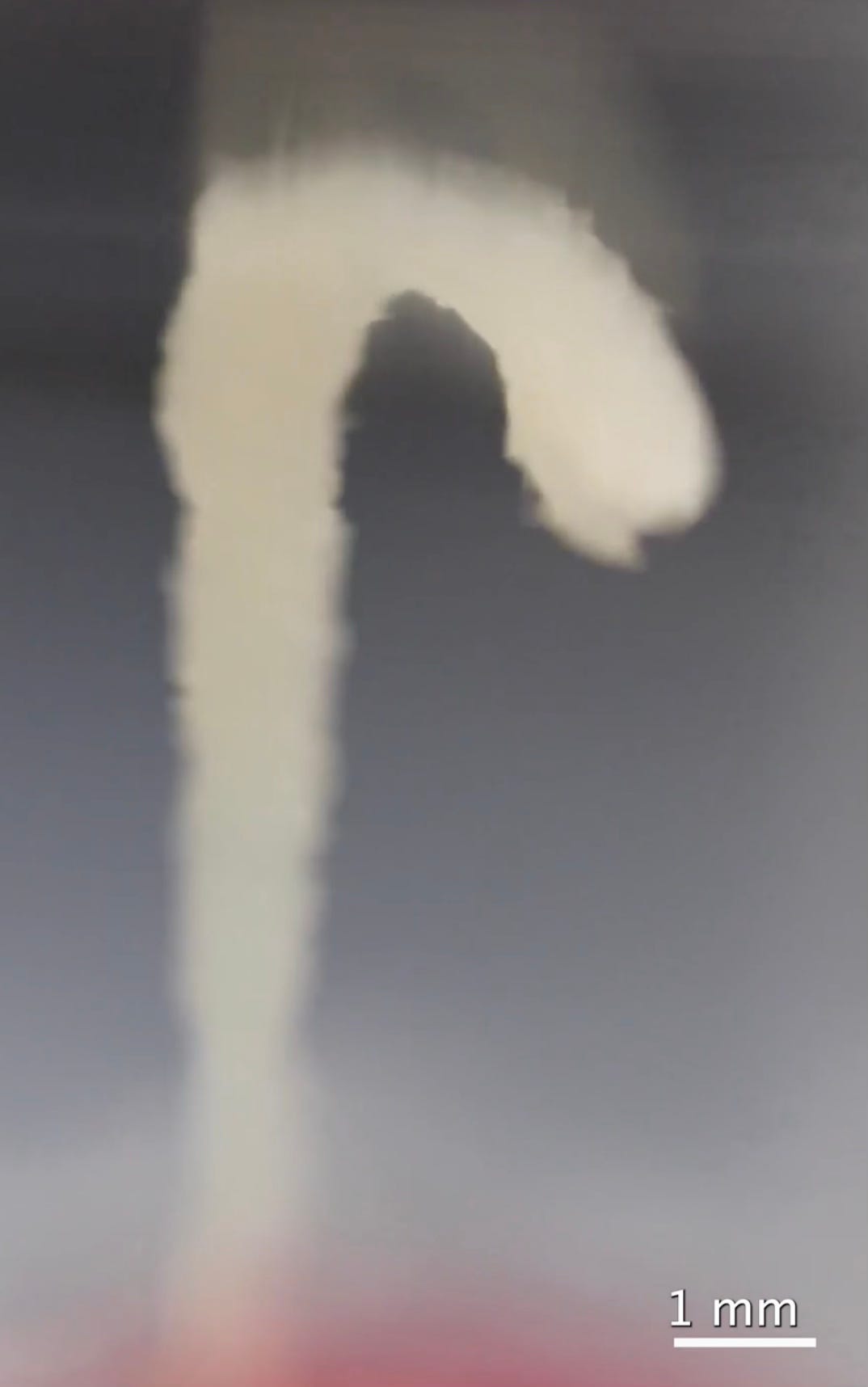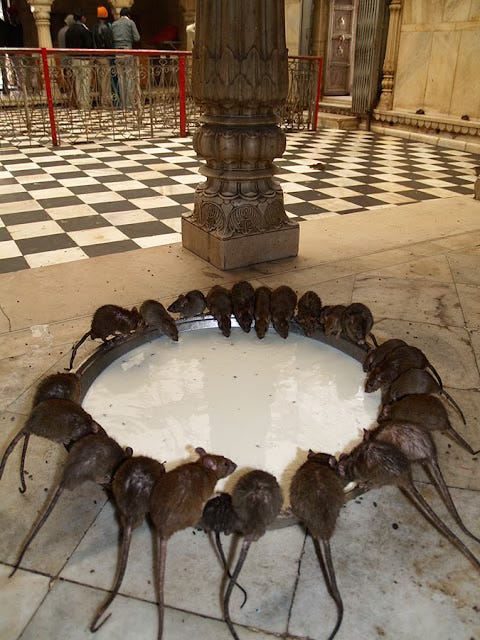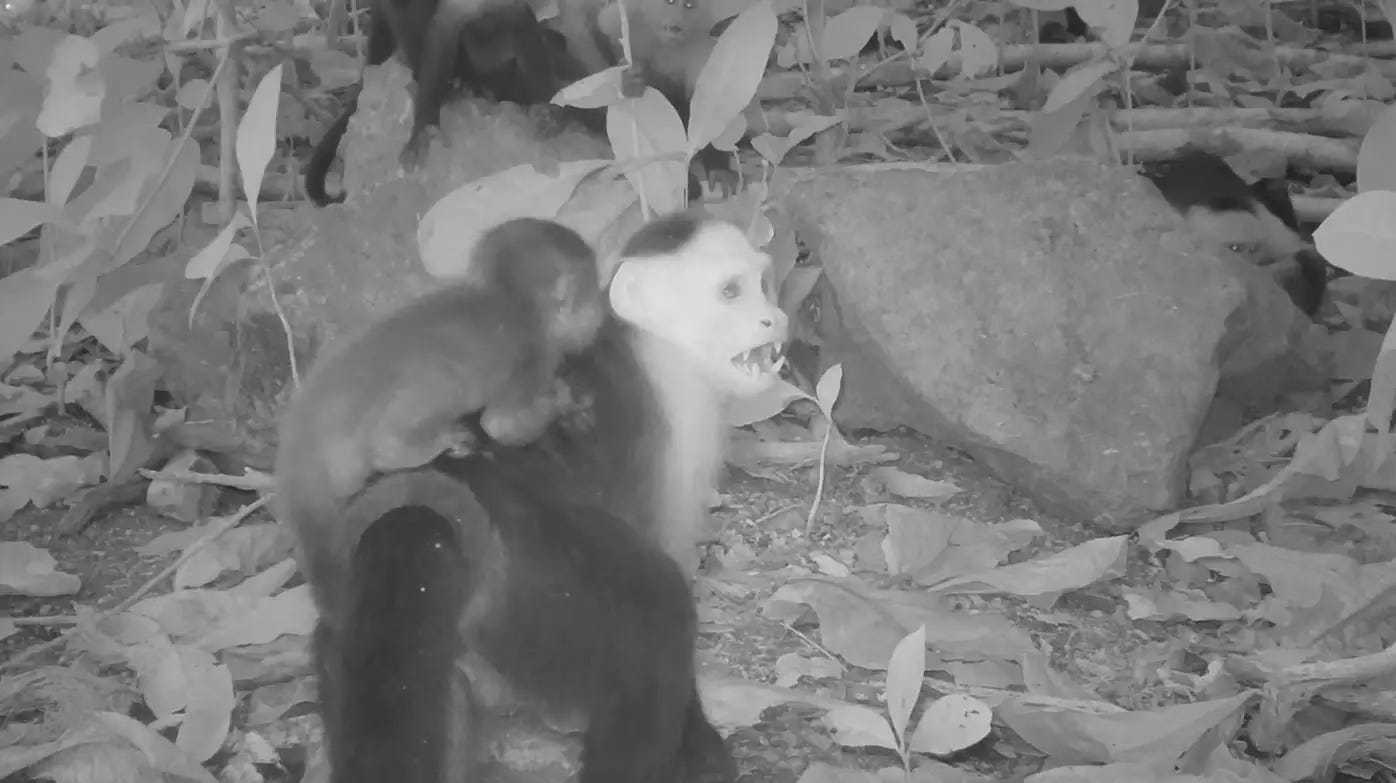Wanted for Kidnapping Babies, And How Hormones Influence Learning and Memory
... and the rest of biology you recently missed, explained to everyone that's curious about life.
Nature and biology is best explored and appreciated outdoors. Go outside, hug a tree, and talk dirty to some lonely insect or something.
The second best thing is probably my newsletters.
The Bio Brief injects recent research, knowledge and a weekly reminder to give a fuck about life and nature. It’s about the important stuff, beautiful stuff, fun stuff, weird stuff, and the other stuff.
I write these because I think it matters that you give a shit.
This week, you can expect to learn about:
How stories change our perception of nature
Trendy kidnappings
How every type of honey isn’t the same
How hormonal fluctuations influence learning and memory
… And probably some more.
You’ve got to know it to love it. So please read on.
The Word for Something That I Have Previously Used Other Words For
This week I discovered that the thing I have always just called the process where reptiles like snakes and stuff shed their outer skin layer, has its own fancy name:
Ectesis.
It should probably just be called the process where reptiles like snakes and stuff shed their outer skin layer.
But it is a cool word for something cool, nonetheless.
The Goddess Concept that We Don’t Deserve But Nature Needs
I recently stumbled upon this very interesting Hindu Goddess/figure from Indian folklore, Karni Mata.
She is a female warrior sage, associated with the typical stuff that you normal expect a female warrior sage to be associated with.
But a bit out of character maybe, is her association with rats.
According to legend, it once upon a time went something like this:
One of her devotees’ sons died, and as you typically do when your homies loses a loved one: you try to bring them back from death. But she didn't get any help from the asshole Yama, the god of death. Understandably being pist, she declared that none of her followers would later on move into Yamas realm after death.
Instead, they would be reincarnated as rats, and later be reborn as humans again in a divine cycle or some longevity protocol similar to that.
She now has her own temple devoted to her. It’s home to an estimated 25,000+ rats, which are worshipped as reincarnated devotees of the goddess. These rats are fed, protected, and allowed to roam freely inside the temple.
People love these rats. They are treated like fellow humans, with respect and dignity (they are reincarnated humans after all).
This is not like a cultural thing where the worshippers of Karni Mata love and respect rats in general. Outside of the temple, like in their homes or on the streets — rats are still considered pests and vermin!
Which is so incredibly fascinating to me. Imagine the same animal treated so differently, just because of some internal spiritual belief that completely alters how it is perceived in a certain context?
It really goes to show that what is considered pest, and what is considered beautiful and holy is truly in the eyes of the beholder.
The rat is the same, it’s just the story that changes.
The idea of purity, pestilence, or reverence isn’t built into the animal — it’s built into us.
The way we define nature says a lot about what we choose to see in it.
Let’s change the story.
Baby Snatchers
Wanted baby kidnapper caught on camera
Baby howler monkey kidnappings by capuchin monkeys have been observed in the wild.
This was observed by researchers from The Max Planck Institute of Animal Behavior, reviewing footage from wild cameras placed on a small Island of Panama.
This is a behavior that has never been witnessed before in wild primates.
And what’s really fascinating, is that you get the vibe that this has grown into something like a trendy fad. It's the first documented case where some animals repeatedly do this, and they are doing this with no clear benefits to themselves.
These capuchin monkeys are originally monitored because of their evolved use of stone tools. Something that one lad just started doing most likely, then the rest picked up on it and learned from this one OG.
Initially, this was what they observed regarding the kidnappings as well. The first abductions was done by the same individual. They speculated if this could be some sort of adoption, which is not unheard of. But that is typically done by females, and this was done by a male.
After a while the kidnapper (which they named the Joker), stopped his mischiefs. So they figured this was just a maverick monkey trying something new, which is not uncommon to see among the capuchins either.
But then the cameras started to pick up on these kidnappings again, and at this point the trend had spread to other males as well. Here nothing short of five different male capuchin monkeys has been observed carrying 11 different infant howler monkeys.
These guys just brought some babies a long on their daily routine of smashing things with stones and stuff.
Although fun and interesting, it is of course a bit sad.
The parents of these infant howler monkeys were caught on camera calling out for theirs babes. And even tho the capuchin monkeys didn’t hurt or kill the infants, they didn't exactly care for them either.
They just used them as living accessories. Eventually some died, and the researchers have speculated that all of them might have perished.
They think the reason for this crazy behavior is boredom.
As with the tool use, which also is only observed in the males — these fuckers have so little going on that they opt to develop cultural trends and go sporting in stead.
It's cultural evolution that mirrors that of humans. It's evolution of the capacity to just do stuff of limited function and benefits, that fucks up the world around as a byproduct.
Lab Party Trick Gone Wild
For the first time nematode worm towers is documented in the wild.
This whole thing has been speculated to work like a collective dispersal mechanism, which is a key trait in social evolution. It has only be known from labs however, but now we know this happens in the wild too. It reinforces the idea that this could in fact be a social trait with in-nature-benefits.
Think of this as a worm skyscraper turned worm cruise ship. These towers can detach from substrates and hitchhike on insects like fruit flies.
They help each other out, and many useless worms can together bond and form a superorganism.
Take inspiration from this the next time you and your useless friends just hang around being useless.

Better Honey
Some types of honey is better at doing antibacterial stuff than others, new research suggests.
You know how there are different types of bees? Something obvious that I haven’t really considered before: The honey they make is different too.
This new study looks into the antimicrobial properties of honey produced by different types of bees.
Specifically it investigates the ones from the Australian stingless bees, which include Tetragonula carbonaria, T. hockingsi, and Austroplebeia australis — commonly known as sugarbag bees.
And these honeys really wreck fungi and bacteria.
Normally, the germ-killing abilities of honeys comes from their ability to generate hydrogen peroxide (the same stuff used in first aid antiseptics). This is done by an enzyme that the bees add to their honey, which is called glucose oxidase. When honey is diluted (for instance when in contact with moisture from a wound), this enzyme is activated and turns the sugar in the honey into glycolic acid and hydrogen peroxide.
This low, steady release of hydrogen peroxide gives honey bacteriostatic or bactericidal properties. It creates environments of oxidative stress that microbes can’t handle. Think of it as honey’s slow-drip bleach.
It’s effective, but also fragile. Hydrogen peroxide degrades easily from light and heat. Also, in some clinical environments, when wounds are drained (less moisture) — you limit the ability of glucose oxidase to make the hydrogen peroxide as well.
The honey from these sugarbag bees however, display a remarkable job with this antimicrobial thing even without the function of hydrogen peroxide! This they tested by exposing the honey to some brutal heat treatment, something that fucks up the peroxide. These are strong signs that other chemical players are involved. These could be some of the stuff that the researchers investigated here, such as the phenolics or proteins from the bees.
You know this thing called antimicrobial resistance? Which is kinda a big challenge to global health at the moment? How amazing it is that natural products like this shows promise in treating bacterial infections.
Perhaps useful for future therapeutics, that would be fucking sweet.
Hormonal Calendars For Better Learning
Have you ever wonder how memory and hormonal cycles are linked?
Of course this is on everyone's minds, as was the case for the researchers of this recent study.
To answer this they implanted a microperiscope into the brains of awake, behaving female mice and used two-photon microscopy to repeatedly image the same neurons over days. This made it possible for them to track how individual synapses and neural activity changed across different stages of the estrous cycle, while the animals were fucking about in their environment.
Based on these observations, it turns out that memory centres are very much influenced by the highs and lows of the estrous cycle.
During the proestrus phase of the estrous cycle (when estrogen levels are highest), the hippocampal neurons grew more spines on their dendrites. This is generally a sign of increased synaptic connectivity and plasticity. In contrast, during estrus, when estrogen plummets, many of these spines are whacked off. So the synaptic landscape of the hippocampus reshapes every few days, in sync with these hormone cycles.
Yet, some of these newly formed spines during the proestrus phase is very stable. So estrogen doesn't just juice up the brain temporarily, it may actually help making lasting structural changes that could support learning or memory when the brain is especially primed for it.

They also looked into something really cool called somatodendritic coupling and back-propagating action potential (bAP).
The first is a measure of how well an electrical signal travels from the dendrite (communication input zone) to the body of the cell (soma) where the signal is further processed and interpreted.
The latter is about how that neuron, when it fires with a action potential along the axon (towards the output zone and dendrites of other neurons), also fires back through the dendrite from which the signal originated. Only some brain cells do this, including some of the neurons in the hippocampus investigated here. It helps reinforce which synapses are active. It's like a cellular high-five to the homie, showing really how much he or what he did matters.
What they found was that during proestrus, these hippocampal neurons get both stronger somatodendritic coupling and bAP. Stronger coupling means that synaptic inputs on dendrites more effectively influence firing, and once firing occurs, the soma better informs dendrites which synapses were involved. It's a bidirectional flow that makes a super supportive environment, key for fine-tuning learning and memory. This stuff weakens during the estrus phase.
Lastly, they also looked into the famous place cells of the hippocampus and their stability. These guys are cells that activate when an animal is in a specific location, working like the brains internal GPS system. Stability means they fire reliably at the same place over time, thus coding for location properly.
During proestrus, place cells were better at “remembering” and maintaining their spatial firing patterns. During estrus, these patterns became less stable. This suggests that how precisely the brain encodes locations also fluctuates with hormonal cycles, likely due to the underlying synaptic changes described above.
Amazing hormonal scenes. It’s not just hormones influencing how mice bitch about and primes themselves for sex, they literally reshape how the brain maps the world.
Would be very interesting to see how this works in humans.
We will probably see some influencer or health guru extrapolate this into some essential protocol before that time tho.
Thank you for your interest in Biology and Nature!
Remember: Nature and biology is best explored and appreciated outdoors, not through a fucking computer. Go outside, hug a tree, and talk dirty to some lonely insect or something.
Then you have this substack, which is established as the second best thing:
If you learned something — consider leaving a comment to let me know!
If you really give a shit, and you want those weekly reminders about stuff going on in nature and fascinating biological research — consider subscribing to Recent Biology.
If you are intrigued by penis duels, selfish genes or the neurobiology of love — check out my recent exploration of these topics.









